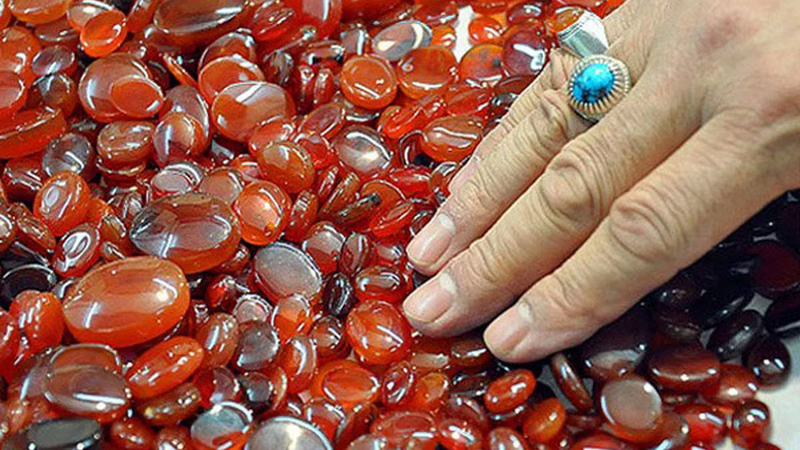
Explore Gemstone Trade in the Middle East
The Middle East and West Asia have long been recognized as hubs for the trade of precious gemstones, natural stones, and minerals. With a rich history of mining and craftsmanship, these regions are home to some of the world's most sought-after commodities, including turquoise, ruby, emerald, lapis lazuli, and pearl. However, navigating the complexities of international trade in such high-value goods can be challenging. This is where Aritral.com steps in as a transformative B2B platform. By leveraging AI-driven technologies, Aritral simplifies the process of connecting suppliers, exporters, and importers in these markets. Suppliers can create detailed product listings for gemstones and minerals, ensuring their offerings are visible to a global audience. Exporters benefit from AI-powered marketing tools that target the most relevant buyers, while importers can directly communicate with trusted suppliers to negotiate deals. Aritral’s profile management system further enhances transparency, allowing businesses to showcase their credibility and expertise in the gemstone trade.
The platform also provides insights into market trends, helping traders make informed decisions in the dynamic Middle Eastern and West Asian markets. For example, the demand for Persian turquoise, known for its vibrant color and historical significance, continues to grow internationally. Similarly, the ruby and emerald markets are thriving due to their aesthetic appeal and investment potential. By streamlining supply chain solutions and fostering reliable connections, Aritral ensures that businesses in the gemstone sector can thrive in a competitive global marketplace. Sign up today on Aritral.com to explore these opportunities and create your profile to tap into the lucrative Middle Eastern and West Asian gemstone trade.
-
 Amir 3 months ago
Amir 3 months ago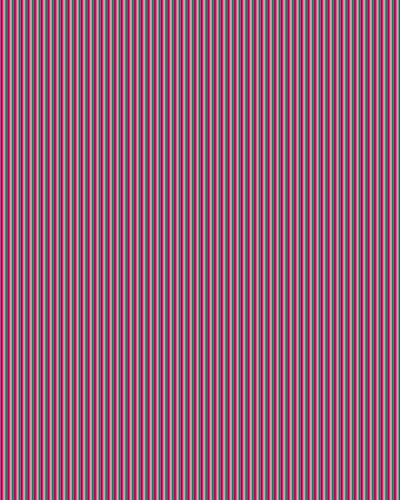 Iran
Black Diamond Meteorite
Iran
Black Diamond Meteorite
The black diamond meteorite is probably carbonaceous, unclassified.Details
-
 Amir Hossein 1 months ago
Amir Hossein 1 months ago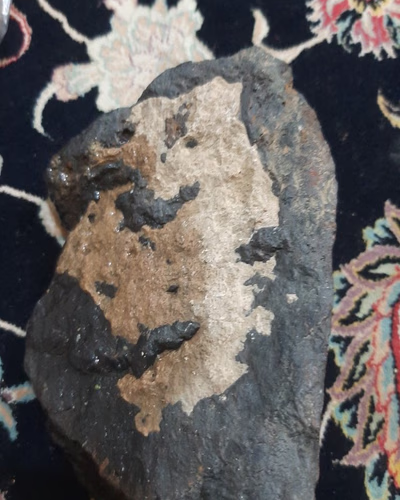 Iran
Meteorite
Iran
Meteorite
I worked very hard on the Martian meteorite, please take a look and let me know if you want.Details
-
 Ayman Radi 1 months ago
Ayman Radi 1 months ago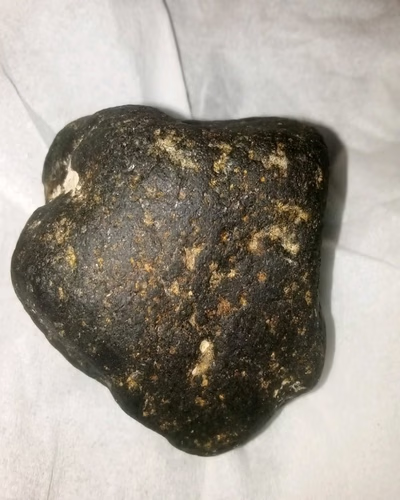 Jordan
Meteorites from the solar, lunar and Martian systems
Jordan
Meteorites from the solar, lunar and Martian systems
Meteorites from the solar, lunar and Martian systems, of different colors, sizes and weights.Details
-
 Hamed 1 months ago
Hamed 1 months ago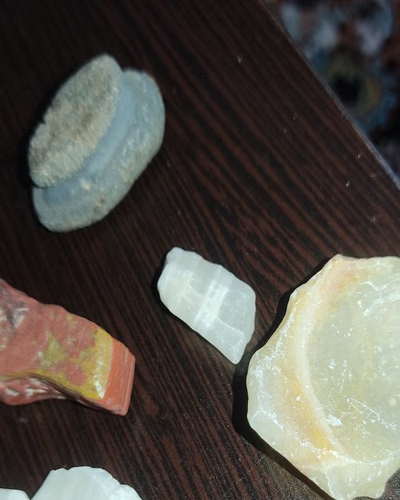 Iran
Printing Stone
Iran
Printing Stone
Printing StoneDetails
-
 Ibrahim 1 months ago
Ibrahim 1 months ago Afghanistan
Precious Stones and Meteorites
Afghanistan
Precious Stones and Meteorites
I loved AllahDetails
-
 Ibrahim Suwar 1 months ago
Ibrahim Suwar 1 months ago Syria
Meteorite
Syria
Meteorite
A rare meteorite measuring 8.5 cm in length, 5.5 cm in width (widest point), and 3 cm in height at the peak. A magnetized stone located in the Badia o...Details
-
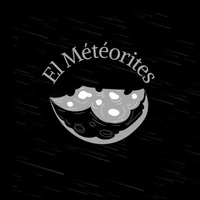 Najmeddin 1 months ago
Najmeddin 1 months ago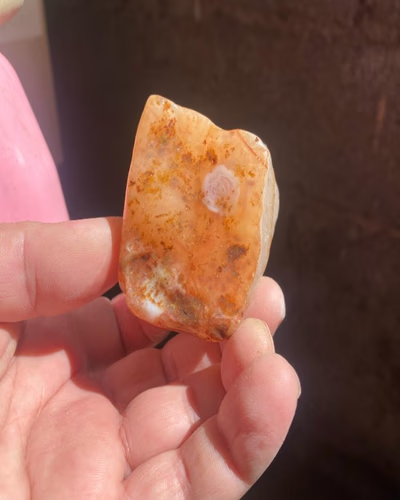 Morocco
Yellow Dendritic Opal (Merlinite)
Morocco
Yellow Dendritic Opal (Merlinite)
Dendritic opal, also known as merlinite, is a stone that combines white quartz with dendritic inclusions of psilomelane, thus creating a stone with un...Details
-
 Btm 3 months ago
Btm 3 months ago Pakistan
BTM Associate's
Pakistan
BTM Associate's
GeologistDetails
-
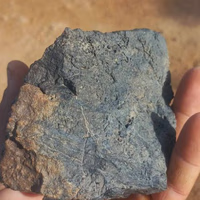 Ali Omar 1 months ago
Ali Omar 1 months ago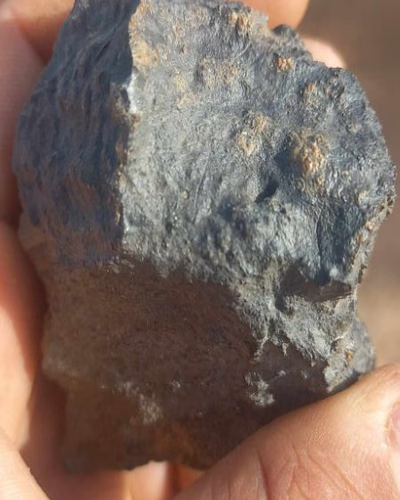 Libya
Meteorites for Sale
Libya
Meteorites for Sale
I have some meteorites in Libya that I want to sellDetails
-
 Borhan Wld El Wali 1 months ago
Borhan Wld El Wali 1 months ago Morocco
Hexagonal Diamond
Morocco
Hexagonal Diamond
Hexagonal DiamondDetails
-
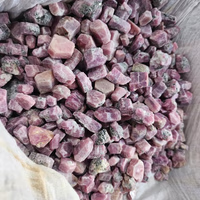 Ammar Al Jabaly 1 months ago
Ammar Al Jabaly 1 months ago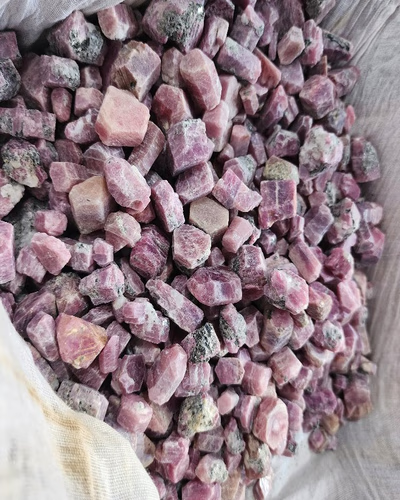 Yemen
Yemeni Ruby
Yemen
Yemeni Ruby
I have 3 kilograms of Yemeni ruby for saleDetails
-
 Abu Jawad 3 months ago
Abu Jawad 3 months ago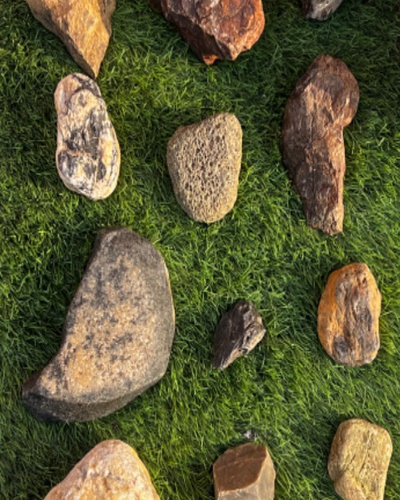 Saudi Arabia
For sale, please be serious in the sale - Gift from the Sky (Meteorites)
Saudi Arabia
For sale, please be serious in the sale - Gift from the Sky (Meteorites)
Rare meteorites and diamondsDetails
-
 Forushgah Iqbal 3 months ago
Forushgah Iqbal 3 months ago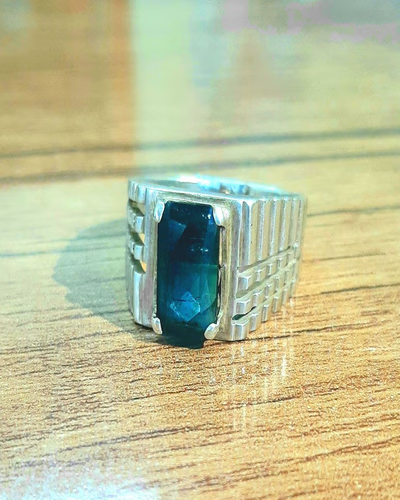 Afghanistan
Buying and Selling Precious Stones and Jewelry
Afghanistan
Buying and Selling Precious Stones and Jewelry
In my store, buying and selling various types of rings with different designs and styles is available.Details
-
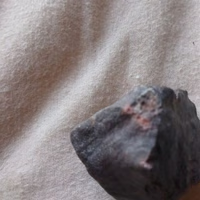 Mo Ali 1 months ago
Mo Ali 1 months ago Egypt
Meteorite
Egypt
Meteorite
Rare meteoriteDetails
-
 Rocu Gems Trading Ltd. 1 months ago
Rocu Gems Trading Ltd. 1 months ago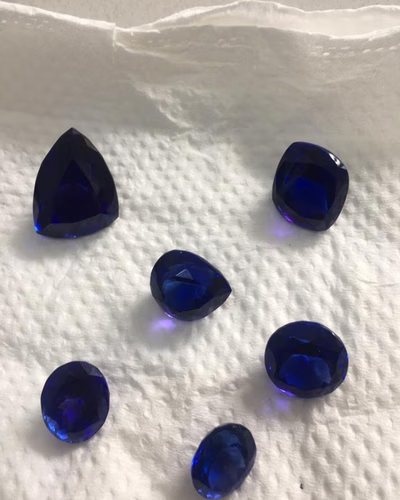 Tanzania
Gemstones
Tanzania
Gemstones
The gemstones of Tanzanite, sapphires, rubies, and spinels are the top gemstones extracted from our mines in Tanzania. \nSpeaking of Tanzanite, it is ...Details
-
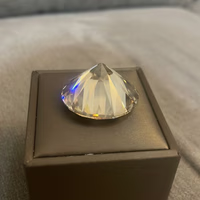 Rayan 3 months ago
Rayan 3 months ago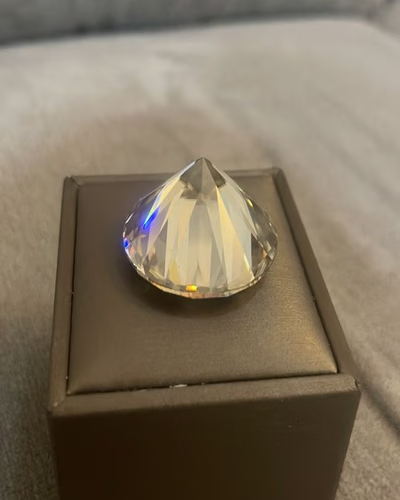 Iraq
Diamond 130 Carats
Iraq
Diamond 130 Carats
Diamond 130 Carats African / Inside the UAEDetails
-
Agate Trade in West Asia: Market Insights and Export Trends

Agate, a semi-precious gemstone renowned for its vibrant colors and unique patterns, holds a central position in the West Asian and Middle Eastern trade dynamics. The region, particularly countries like Iran, boasts significant agate reserves, making it a hub for global exports of agate, opal, and onyx gemstones. Known for its durability and aesthetic appeal, agate is highly sought after in jewelry and decorative industries worldwide. The Asian agate market is witnessing growth, fueled by increasing demand from both local and international buyers. Middle Eastern trade platforms play a pivotal role in connecting global markets to verified exporters and importers, offering transparency and efficiency. These platforms provide essential services such as product listings, market insights, and trade advertising, ensuring seamless transactions across borders. The trade of agate, alongside other gemstones like turquoise, ruby, and lapis lazuli, has become highly profitable due to the region’s rich geological resources and strategic location. Iran, in particular, stands out for its vast agate reserves, contributing significantly to the gemstone trade in West Asia.
The export potential of agate and similar gemstones is bolstered by regional B2B marketplaces, fostering business networking opportunities and supply chain solutions. Verified exporters leverage these platforms to showcase region-specific product listings, enhancing trust and global reach. Additionally, gemstones like chrysocolla and turquoise add to the region’s allure, with their unique colors and cultural significance. The Middle East facilitates robust trade networks for these stones, bridging Asian and global markets. As the demand for gemstones like agate continues to rise, platforms like Aritral offer AI-driven solutions to streamline international trade, enabling businesses to capitalize on this growing market efficiently.
-
Amber Trade in Middle East: The Gold of the Sea in West Asia Markets
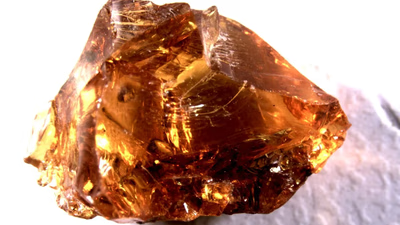
Amber, often referred to as the "Gold of the Sea," holds a unique position in the Middle Eastern and West Asian trade markets. Its organic origins and rich hues, ranging from honey to deep orange, make it a prized gemstone in the global jewelry industry. Middle Eastern trade platforms, particularly B2B marketplaces, play a pivotal role in connecting verified exporters and importers for amber and other gemstones such as turquoise, chrysocolla, and ruby. Oriental Amber Traders in Asia leverage these platforms to facilitate seamless transactions and access regional product listings, ensuring transparency and trust. Amber"s significance extends beyond aesthetics. In various cultures, it is believed to have therapeutic properties, which adds to its market value. The Middle East, as a central hub for commodity trade, has seen a surge in demand for amber and its derivatives. Regional platforms provide market insights, helping businesses navigate pricing trends and demand fluctuations effectively.
Amber is not the only gemstone thriving under this dynamic. Chrysocolla, with its striking blue-green colors, is gaining traction in the jewelry industry, while turquoise and lapis lazuli continue to be celebrated for their ancient ties to Middle Eastern heritage. From emeralds associated with wealth to diamonds symbolizing prestige, these gemstones are traded extensively through West Asian supply chains. This is bolstered by verified B2B platforms that enhance transparency and facilitate global networking. Aritral, an AI-driven B2B platform, supports this ecosystem by offering tools like AI-powered marketing and global sales assistance. These features empower traders to manage profiles, advertise products, and connect with verified buyers and sellers. With the Middle East"s strategic location and robust trade networks, gemstones like amber are poised for sustained growth, reinforcing the region"s status as a global trade hub. "
-
Charoite"s Role in Middle Eastern Gemstone Trade"
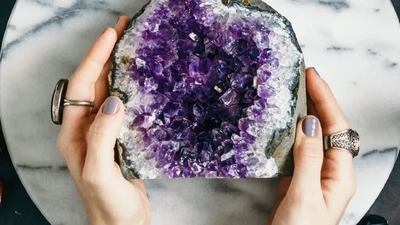
Charoite, a rare and striking violet gemstone, is gaining momentum in the Middle Eastern and West Asian markets as a valuable commodity for luck, wealth, and metaphysical benefits. The region"s dynamic B2B trade platforms have enabled seamless connections between verified exporters and importers, driving growth in the gemstone industry. The Middle East, a hub for global gemstone trade, facilitates the buying and selling of Charoite through advanced supply chain solutions and regional product listings. These platforms provide market insights, allowing businesses to navigate pricing trends and expand their networks effectively. Charoite is especially sought after in West Asia, where its unique aesthetic and metaphysical properties—linked to luck, wealth, and harmony—make it a preferred choice for jewelry and spiritual purposes. Verified exporters in the region ensure authenticity, supporting the gemstone"s premium market positioning. Importers leverage Middle Eastern trade advertising platforms to source high-quality Charoite, contributing to its rising demand. The Middle Eastern gemstone market also thrives on synergies with other valuable stones like Chrysocolla, Turquoise, Ruby, and Tanzanite.
These gemstones, known for their distinct colors and cultural significance, complement Charoite in trade dynamics. As regional platforms evolve with AI-driven marketing tools, exporters and importers find it easier to scale their operations, diversify their portfolios, and enhance transparency in trade. Aritral, for instance, empowers businesses by streamlining international transactions and facilitating direct communication across borders. In conclusion, Charoite"s growing prominence in the Middle East and West Asia underscores the significance of regional trade platforms in connecting global markets. This gemstone"s role in fostering wealth and luck not only bolsters its demand but also cements its place as a cornerstone in the thriving gemstone industry of the region.
-
Chrysocolla: A Gemstone in Middle Eastern Trade Dynamics
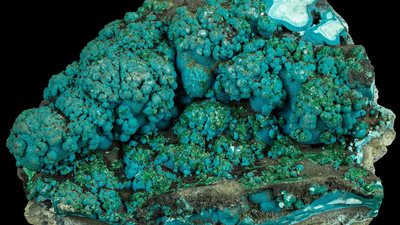
Chrysocolla, a captivating gemstone admired for its vibrant green and blue hues, has emerged as a valuable commodity in the Middle East and West Asia"s gemstone trade. Known for its resemblance to turquoise, this unique mineral is in high demand among collectors, jewelers, and industrial buyers across these regions. Chrysocolla"s appeal lies in its aesthetic properties and its versatility, making it a sought-after material for jewelry, carvings, and ornamental uses. The Middle East and West Asia are pivotal hubs for the global gemstone trade, facilitating connections between verified exporters and importers through B2B marketplaces. Regional platforms are enhancing transparency and efficiency in commodity trading by offering supply chain solutions and accurate market insights. Chrysocolla has carved a niche within this ecosystem, benefiting from the established networks used to trade gemstones like turquoise, ruby, emerald, and lapis lazuli. The role of trade advertising platforms in showcasing Chrysocolla’s unique attributes has further boosted its visibility and sales. Chrysocolla’s similarity to turquoise adds intrigue to its market dynamics.
In regions like West Asia, where turquoise gemstones have historic significance, Chrysocolla has attracted buyers looking for affordable yet equally impressive alternatives. These dynamics are reflected in regional product listings and marketplace trends, where Chrysocolla is gaining attention alongside other gemstones such as jade, ruby, and amber. Aritral, an AI-driven B2B platform simplifying international trade, is contributing to this transformation by offering services like global sales assistance, AI-powered marketing, and verified exporter profiles. Its supply chain solutions are particularly valuable for commodities like Chrysocolla, ensuring seamless transactions in the competitive Middle Eastern gemstone market. As Chrysocolla continues to shine in the gemstone industry, its trade reflects the broader integration of Middle Eastern markets with global supply chains, creating lucrative opportunities for businesses across Asia and beyond.
-
Middle Eastern Diamond Trade: Insights and Future Trends
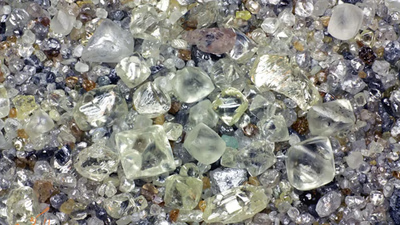
The Middle East and West Asia are increasingly pivotal in the global diamond trade, leveraging their strategic position as crossroads between East and West. While the region is not a top diamond producer, it ranks sixth globally, with notable resources distributed across specific areas. For instance, some Middle Eastern territories are seeing growing interest in diamond mining, bolstered by advancements in exploration techniques and market demand. However, the Middle East’s commercial advantage lies in its role as a trading hub rather than a primary producer. Verified exporters and importers rely on regional B2B marketplaces to facilitate secure and efficient trade. The diamond trade in the Middle East benefits from a well-integrated supply chain and dynamic market insights. These platforms enable businesses to list regional products, advertise trade opportunities, and connect with stakeholders across Asia and beyond. Diamonds, along with other gemstones like turquoise, ruby, and emerald, are traded extensively, especially in jewelry and luxury sectors.
As a complement to diamonds, other minerals like lapis lazuli, jade, and amber (nicknamed ‘Gold of the Sea’) further diversify the Middle Eastern gemstone economy. Historically, diamonds have represented wealth, and their demand continues to rise globally, with Asia emerging as a significant consumer base. Middle Eastern trade platforms simplify this process by providing AI-powered marketing solutions, product listing management, and verified user networks. For instance, platforms like Aritral enable businesses to navigate the intricate import-export landscape with ease. This digital shift is increasingly critical as the diamond trade moves into the future, driven by consumer preferences for transparency and ethical sourcing. With innovations in trade technology and a strategic geographic location, the Middle East remains a cornerstone of the global diamond and gemstone economy.
-
Emerald and Middle Eastern Gemstone Trade Insights
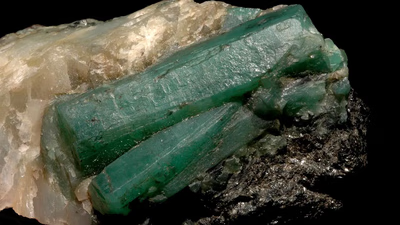
Emerald, regarded as the second most precious gemstone after diamond, holds a pivotal role in the Middle East and West Asian gem trade. Renowned for its vivid green hue, this precious stone is a symbol of wealth and prosperity, and its trade contributes significantly to regional economies. The Middle East serves as a central hub for the import and export of emeralds, leveraging its strategic location to connect Asian and global markets. Verified exporters and importers on platforms like Aritral have facilitated a more secure and transparent trading environment, establishing trust among buyers and sellers. Emerald’s value lies not only in its rarity but also in its perception as a stone that can increase the flow of wealth and good fortune. Distinguishing natural emeralds from synthetic ones requires expertise, as genuine stones exhibit slight inclusions and a distinct color vibrancy. Key emerald reserves and mines are located in Colombia, Zambia, and Brazil, with significant demand coming from Middle Eastern jewelry markets. In addition to emeralds, the region’s gemstone trade encompasses spinel, turquoise, ruby, and lapis lazuli.
Spinel, known for its durability and diversity in color, is gaining traction in West Asia due to its affordability and aesthetic appeal. Similarly, the Middle Eastern pearl and turquoise markets thrive, with pearls symbolizing elegance and turquoise reflecting cultural heritage. B2B marketplaces like Aritral are streamlining the gemstone trade by offering advanced supply chain solutions, regional product listings, and market insights. This infrastructure supports the efficient trading of gemstones, fossils, and meteorites, helping businesses navigate pricing dynamics and market trends. The Middle East’s role as a gemstone trade hub underscores its importance in connecting Asia with international markets, driving economic growth in the region.
-
Jade Stone Trade in West Asia: Insights and Market Trends
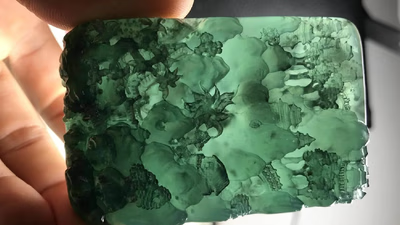
Jade, often referred to as the "Stone of Paradise," plays a significant role in the gemstone trade of West Asia and the Middle East. The Middle Eastern jade market is a hub for verified exporters and importers, connecting global buyers with regional suppliers through dynamic B2B platforms. Known for its transcendental properties and rich cultural significance, jade finds demand in jewelry, décor, and spiritual uses. Pricing for jade is influenced by its color, clarity, origin, and craftsmanship, with premium-grade jade sourced from renowned mines in Asia commanding the highest value. The Middle East serves as a critical link between Asia and international markets, facilitating the trade of not only jade but also other gemstones like turquoise, ruby, and lapis lazuli. Platforms specializing in gemstones offer detailed product listings, market insights, and supply chain solutions, ensuring transparency and efficiency. Jade"s appeal lies in its vibrant green hues and symbolic value, making it a sought-after commodity for both collectors and commercial buyers. In addition to jade, the region also excels in the trade of other rare minerals such as chrysocolla, spinel, and amber.
Verified exporters leverage advanced trade advertising platforms to promote these products, while importers benefit from access to authenticated sources. The Middle Eastern jade market, supported by robust supply chain networks, continues to thrive as a vital component of its broader gemstone trade ecosystem. Aritral, an AI-driven B2B platform, simplifies these transactions by providing product listing services, direct communication tools, and AI-powered marketing solutions to enhance global sales. By fostering trust and efficiency, platforms like Aritral enable seamless trading experiences for jade and other gemstones in the Middle East and beyond. "
-
Lapis Lazuli Trade in West Asia and Middle Eastern Gemstone Markets
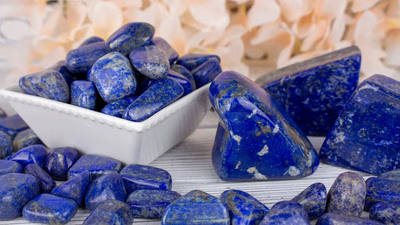
Lapis lazuli, a mesmerizing azure gemstone, has been a cornerstone of trade and culture in West Asia for centuries. Known for its deep blue color and spiritual properties, it holds a prominent place in the global gemstone market, particularly in the Middle East and Asia. This region serves as a critical trade platform, leveraging historical trade routes and modern B2B marketplaces to connect verified exporters and importers for gemstones like lapis lazuli, ruby, emerald, and turquoise. The Middle East, as a hub for commodity trade, facilitates the import and export of lapis lazuli through well-structured supply chain solutions and regional product listings. This enables businesses to tap into market insights and enhance their reach across West Asia and beyond. Lapis lazuli mines, primarily located in Afghanistan, are central to its trade, with the stone being used in jewelry, decor, and chakra therapy. Differentiating genuine lapis lazuli from synthetic variations remains a key challenge, but modern techniques and trade standards help ensure authenticity. Emerald, one of the most precious stones after diamonds, also plays a significant role in regional trade, driving economic value and financial flow.
Similarly, gemstones like spinel, turquoise, and amber underline the diverse market dynamics in the Middle East. Spinel, with its vibrant hues, is particularly popular in jewelry, while turquoise, often linked to ancient Middle Eastern cultures, continues to thrive in contemporary trade. Other stones like tanzanite, jade, and charoite further diversify the market, attracting international buyers. Platforms like Aritral simplify these global trade dynamics by offering AI-powered marketing, product listings, and verified sourcing solutions. Such platforms ensure that businesses remain competitive in the gemstone trade while navigating the complexities of the Middle Eastern and Asian markets.
-
Middle East Meteorite and Gemstone Trade Insights
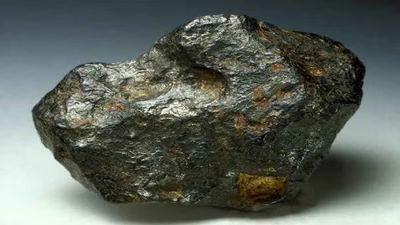
The Middle East has established itself as a dynamic hub for the trade of rare commodities, gemstones, and meteorites, connecting West Asia with global markets. Meteorites, in particular, are gaining traction as a niche but valuable asset, with growing interest among collectors and scientific communities. The Middle Eastern meteorite market benefits from its strategic position, facilitating the import and export of these celestial objects across Asia. Platforms that ensure the verification of sellers and buyers have contributed to the credibility and growth of this specialized market. Gemstones like chrysocolla, turquoise, and lapis lazuli also play a pivotal role in the region’s trade ecosystem. Chrysocolla, with its unique hues, has become increasingly popular in the Middle East, driving demand in B2B marketplaces and fostering connections between verified exporters and importers. Similarly, the region"s turquoise trade thrives, offering competitive pricing and robust supply chain solutions. Middle Eastern platforms are instrumental in connecting these gemstones to global markets, including emeralds, rubies, and pearls, which are staples in the jewelry industry.
Amber, known as the "Gold of the Sea," and fossils also form part of the broader commodity trade in West Asia. With increasing demand for these materials, Middle Eastern trade platforms provide insights into pricing, market trends, and export opportunities. The region’s expertise in supply chain management ensures seamless trade flows, even for rare materials like charoite and spinel. Aritral, an AI-driven B2B platform for commodities and raw materials, simplifies international trade by offering verified product listings, global sales assistance, and AI-driven marketing. Its tools can empower businesses to participate effectively in the Middle Eastern gemstone and meteorite markets, fostering transparency and growth. "
-
Middle Eastern Pearl and Gemstone Trade Insights
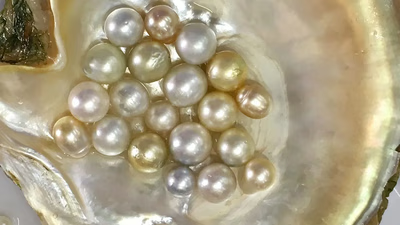
The Middle Eastern pearl market has long been a cornerstone of the region’s rich trade history, especially along the Persian Gulf, renowned for some of the finest natural pearls in the world. Pearls, often referred to as the ‘gems of the sea,’ continue to thrive in the modern commodity trade of West Asia, bolstered by growing demand from neighboring Asian markets. The distinction between natural pearls, cultured pearls, and artificial alternatives plays a critical role in pricing, with natural pearls remaining the most valuable due to their rarity and unique formation process. The Persian Gulf remains a global hub for pearl fishing, a tradition steeped in history but evolving through modern supply chain solutions to meet international standards. The import and export of pearls in the Middle East are facilitated by B2B marketplaces, which connect verified exporters and importers while ensuring transparency and efficiency. These platforms also provide market insights, allowing businesses to navigate fluctuating demand and pricing influenced by factors like quality, size, and origin. The rise of trade advertising platforms and business networking opportunities further supports the visibility and global reach of Middle Eastern pearl traders. The Middle East also plays a significant role in the broader gemstone market, including chrysocolla, turquoise, ruby, emerald, and lapis lazuli.
Chrysocolla, with its vibrant blue-green hues, and turquoise remain particularly sought after in jewelry markets, while gemstones like ruby and emerald cater to high-end luxury buyers. These stones often pass through the same trade and supply chain networks as pearls, leveraging regional strengths in import-export frameworks. Aritral, an AI-driven B2B trade platform, enhances this ecosystem by offering product listings, global sales assistance, AI-powered marketing, and profile management, simplifying transactions for both pearls and gemstones. It empowers Middle Eastern businesses to expand into global markets efficiently while maintaining trust and transparency.
-
Ruby and Gemstone Trade in the Middle East: Insights and Dynamics
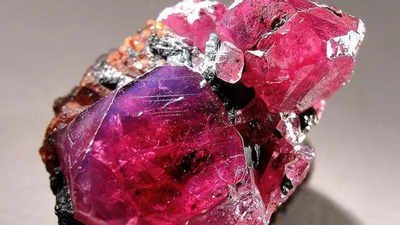
The gemstone trade in West Asia and the Middle East has long been a cornerstone of regional commerce, connecting markets across Asia through a dynamic B2B ecosystem. Ruby, with its deep red hues and exceptional brilliance, holds a special place in this market. Known for its beauty and versatility, ruby gemstones are a favorite in the jewelry industry, contributing significantly to the Asian Ruby Crystal Market and the Natural Ruby Stone value in the Middle East. The pricing of rubies is influenced by their origin, clarity, and size, with Burmese rubies often commanding the highest premiums. Verified exporters and importers facilitate a seamless supply chain for rubies and other gemstones, ensuring quality and authenticity in trade. Beyond ruby, other prized gemstones such as lapis lazuli, emerald, spinel, turquoise, and pearl dominate the trade landscape. Lapis lazuli, for instance, is highly sought after for its azure tones and historical significance, with trade flourishing through Middle Eastern and West Asian markets. Emerald, often considered second only to diamonds in value, boosts economic activity in the region due to its luxurious appeal and increasing demand in jewelry design.
Spinel, with its wide range of colors, and turquoise, valued for its ancient cultural symbolism, also play pivotal roles in regional trade. The Middle East serves as a hub for the import and export of gemstones, pearls, fossils, and meteorites, leveraging platforms like Aritral to provide market insights, verified business networking, and trade advertising solutions. This robust infrastructure supports not only gemstones but also commodities like amber, jade, charoite, and tanzanite, which see steady demand in global markets. By fostering regional product listings and facilitating direct communication, the Middle East continues to promote growth in the gemstone and broader commodities trade, making it a vital link in Asia"s supply chain solutions. "
-
Exploring the Market Insights of Spinel in the Middle East
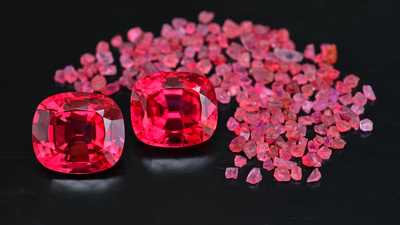
Spinel, a versatile and precious gemstone, holds a pivotal place in West Asia and the Middle Eastern trade markets. Renowned for its vibrant hues ranging from deep red to cobalt blue, Spinel has historically been mistaken for rubies, adding to its intrigue in the global gemstone trade. The Middle East, with its well-established role as a trade hub, facilitates the import and export of Spinel through B2B marketplaces, verified exporters, and transparent supply chain solutions. Platforms like Aritral enable regional product listings and provide market insights, ensuring efficiency and security in transactions. The market of Spinel in the Middle East is thriving due to its growing demand in luxury jewelry and its symbolic significance in various cultures. Spinel"s competitive pricing compared to ruby and emerald makes it an attractive alternative for buyers. For instance, red Spinels, often sourced from mines in Myanmar and Sri Lanka, are highly prized for their rich colors and durability. Methods to differentiate Spinel from ruby include advanced gemological tools, as Spinel typically exhibits unique optical properties like a single refractive index.
West Asia also contributes significantly to Spinel"s trade dynamics, leveraging its proximity to major mines and its strategic position in global trade routes. Pricing strategies for Spinel vary based on factors such as origin, clarity, and size. Artificial Spinels are detectable through fluorescence, inclusions, and refractive testing. The demand for other gemstones such as turquoise, pearl, ruby, and lapis lazuli complements Spinel"s market growth, supported by the Middle East"s expertise in gemstone trade networks. Aritral, an AI-driven B2B platform, streamlines Spinel transactions by offering direct communication tools, AI-powered marketing, and global sales assistance. These services enhance transparency and build trust among international buyers and sellers, cementing the Middle East"s position as a cornerstone in the gemstone trade industry. "
-
Tanzanite Trade in West Asia: Dynamics and Insights
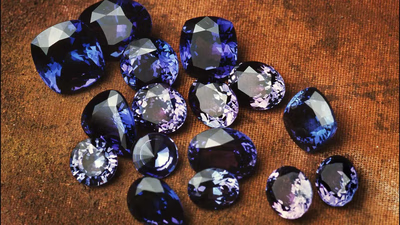
Tanzanite, a rare and captivating gemstone, has gained prominence in the West Asian and Middle Eastern commodity trade, particularly through B2B platforms and regional trading hubs. Known for its vivid hues—ranging from deep blue to violet—this gemstone is primarily sourced from Tanzania, making it a highly sought-after item in global markets. The Middle East plays a pivotal role in connecting Tanzanite traders with buyers across Asia, leveraging verified exporters, supply chain solutions, and market insights for seamless transactions. The Tanzanite stone buying and selling market in West Asia thrives on its exclusivity and aesthetic appeal, attracting significant interest from the jewelry sector. Its value varies depending on color, clarity, and carat weight, with West Asian traders offering competitive pricing through transparent marketplaces. Middle Eastern trade platforms further enhance this by providing regional product listings and fostering business networking opportunities. Alongside Tanzanite, other gemstones like Chrysocolla, Turquoise, Ruby, and Emerald also form a significant part of the Middle Eastern gemstone trade. These platforms integrate verified exporters and importers to ensure authenticity and quality, a vital factor for high-value commodities like Tanzanite and Diamond.
The region"s role as a trade advertising hub promotes market efficiency and connectivity, benefiting traders and buyers alike. Aritral, an AI-driven B2B marketplace, aids in this ecosystem by offering services such as product listing, direct communication, and AI-powered marketing, enabling smooth international trade in gemstones and other commodities. By providing access to real-time market insights, Aritral empowers traders to make informed decisions, driving the growth of Tanzanite and other gemstones in the Middle East and West Asia. "
-
West Asia Gemstone Trade: Topaz and Beyond
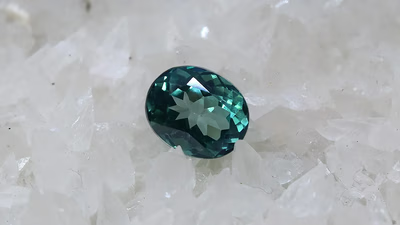
The gemstone trade in the Middle East and West Asia is experiencing a dynamic transformation, driven by robust platforms connecting verified exporters and importers. Topaz, often celebrated for its brilliant and diverse colors, stands as a key player in this market. With reserves spread across the globe, the Asian Topaz Market is particularly significant, bolstered by West Asia"s strategic role in import-export operations. This region facilitates efficient supply chain solutions and transparent business networking, ensuring the seamless movement of topaz and other gemstones like ruby, emerald, and lapis lazuli. Middle Eastern trade platforms are pivotal in fostering growth for gemstones such as chrysocolla, turquoise, pearl, and amber. Chrysocolla, admired for its unique colors, finds its niche in connecting verified exporters from Asia to global buyers. Similarly, turquoise enjoys historical significance in the region, with West Asia acting as a hub for trade and processing. Pearls, often dubbed the treasures of the sea, maintain their allure in the jewelry industry, supported by sophisticated supply chain mechanisms.
Amber, commonly referred to as the ‘Gold of the Sea,’ plays a vital role in West Asia"s gemstone market. Meanwhile, diamonds, emeralds, and spinels drive high-value transactions, leveraging Middle Eastern market insights and advertising platforms. Agate and lapis lazuli, with their distinctive appearances and uses, further enrich the gemstone trade. Additionally, niche markets such as charoite, meteorites, fossils, and tanzanite cater to specialized buyers and sellers. Aritral, an AI-driven B2B platform, simplifies these transactions, offering product listings, direct communication, and AI-powered marketing. By enhancing market transparency and efficiency, it ensures the Middle East remains a cornerstone of the global gemstone trade.
-
Turquoise and Gemstone Trade in the Middle East
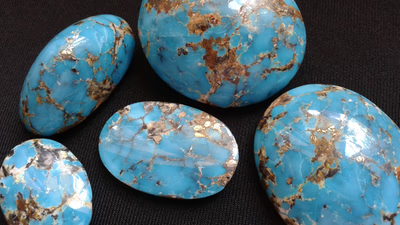
Turquoise, a captivating gemstone known for its vibrant blue-green hues, has been a significant part of Middle Eastern trade for centuries. Historically, Persian turquoise—renowned for its intense color and minimal veining—has been a cornerstone of the region"s gemstone economy. Today, the Middle East remains a vital hub for turquoise and other gemstones like ruby, emerald, and lapis lazuli, serving as a bridge between Asian suppliers and global buyers. The West Asian turquoise market thrives on verified exporters and importers, leveraging B2B platforms to facilitate regional product listings and ensure secure transactions. Turquoise"s value and price vary based on factors like origin, color, matrix patterns, and carat weight. Persian turquoise, in particular, commands premium pricing due to its historical significance and quality. Beyond turquoise, the Middle Eastern gemstone trade includes high-demand stones like ruby, prized for its vivid red hue and role in the jewelry industry, and emeralds, which are second only to diamonds in perceived value. Lapis lazuli, with its deep azure tones, is another significant trade item, often sourced from West Asia to meet global demand for ornamental and jewelry uses.
Spinel, chrysocolla, pearls, and agate also contribute to the region’s gemstone trade, with each stone offering unique attributes and market dynamics. Supply chain solutions play a crucial role in ensuring the efficient import and export of these gemstones. Platforms like Aritral simplify this process by providing AI-powered marketing, product listings, and direct communication tools, enhancing market insights and networking opportunities for businesses in the region. In conclusion, the Middle East"s gemstone market is a dynamic ecosystem, integrating ancient traditions with modern trade practices. Turquoise, alongside other precious stones, continues to captivate global markets, underscoring the region"s pivotal role in international trade.
-
Gemstone and Fossil Trade in the Middle East and West Asia

The Middle East and West Asia are emerging as pivotal regions in the global gemstone and fossil trade, leveraging advanced B2B platforms to connect verified exporters and importers. Among the gemstones, Chrysocolla stands out for its vibrant, unique colors, enriching the jewelry industry and solidifying its importance in Middle Eastern trade hubs. The region also facilitates the trade of turquoise, pearls, rubies, and diamonds, with turquoise playing a significant historical and economic role due to its cultural significance in ancient Middle Eastern civilizations. Verified exporters utilize regional B2B marketplaces to trade gemstones like emeralds, tanzanites, lapis lazuli, and spinels. Emeralds, in particular, are valued not only for their beauty but also for their perceived ability to enhance financial prosperity. Precious stones such as topaz, charoite, jade, and agate contribute to the flourishing gemstone markets, supported by supply chain solutions and market insights tailored for West Asia. The fossil stone trade in the Middle East is gaining momentum, with a focus on diverse fossils, including meteorites and amber, often referred to as the "Gold of the Sea. " Fossils found in specific regions across West Asia are priced based on rarity, geological origin, and historical significance.
International buyers and sellers can leverage platforms for transparent communication, comprehensive product listings, and pricing guidance, ensuring smooth transactions. Aritral, an AI-driven B2B platform, simplifies these trade processes by offering tools like direct communication, global sales assistance, AI-powered marketing, and profile management for exporters. By fostering seamless connections, platforms like Aritral empower businesses to expand their reach in Middle Eastern and global markets for commodities such as gemstones and fossils.
-
Get facts about Asian amber
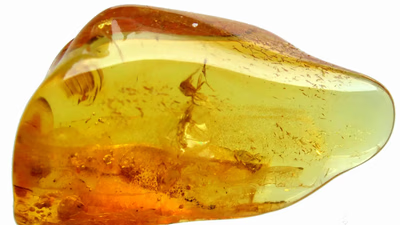
Amber, formed from ancient tree resin, is predominantly found in Myanmar, particularly in the Hukawng Valley. This fossilized resin, known as Asian amber, dates back approximately 99 million years to the mid-Cretaceous period. Its aesthetic and scientific significance is immense, as it provides insights into ancient ecosystems through the preservation of inclusions like insects and plants. The color variations of Asian amber, including yellow, orange, red, brown, and green, are influenced by tree species and impurities. Highly valued in jewelry, Asian amber is often referred to as the "gold of the sea" due to its beauty and allure. It symbolizes love and tenderness, making it a popular choice for decorative items. However, buyers should be cautious of imitations and treatments that may affect authenticity. Proper care, including storage away from sunlight and gentle cleaning, is essential to maintain its luster. Overall, Asian amber is not only a treasured gemstone but also a vital resource for scientific research, offering a glimpse into the biodiversity of ancient life.
-
Asian topaz gemstone
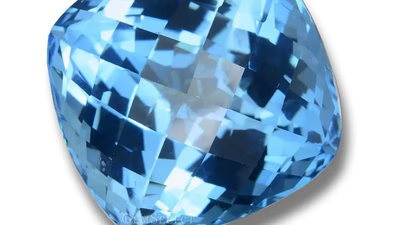
Topaz, a gemstone known for its diverse colors, is particularly significant in Asia, with notable varieties including imperial and blue topaz. Imperial topaz, valued for its reddish-orange to pinkish-orange hues, is primarily sourced from Brazil but also found in Myanmar"s Mogok region, renowned for its exceptional quality. Blue topaz, popular for its vibrant hues, is predominantly produced in Thailand and Sri Lanka, where skilled artisans enhance its color through various treatments. Other Asian countries such as India, Pakistan, and Afghanistan also contribute to the topaz market, with India recognized for its large crystal sizes and intricate jewelry designs. Topaz is an aluminum silicate mineral with a hardness of 8 on the Mohs scale, making it suitable for everyday wear. Proper care is essential to maintain its beauty, including protection from harsh chemicals and regular cleaning. The gemstone"s popularity is attributed to its vibrant colors, excellent hardness, and affordability. In addition to its aesthetic appeal, topaz holds cultural significance in Asia, believed to bring good fortune and emotional balance.
The value of topaz is determined by factors such as color, clarity, and size, with imperial topaz commanding higher prices due to its rarity. Overall, Asian topaz gemstones are widely available and used in various jewelry forms, making them a popular choice among consumers.
-
Asian Charoite Value, Price, and Jewelry Information
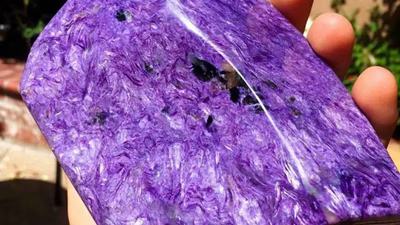
Charoite is a rare and unique gemstone primarily sourced from the Chara River region in Siberia, Russia. Known for its striking purple color and swirling patterns, Charoite is appreciated for its beauty and metaphysical properties, including enhancing intuition and promoting inner strength. Discovered in the 1940s, it gained popularity in the 1970s as a favored choice for jewelry, including rings, pendants, and bracelets. The value of Charoite is influenced by factors such as color, clarity, size, and overall quality, with fine-quality stones commanding higher prices. While it is moderately priced compared to more famous gemstones, its rarity and distinctive appearance make it a sought-after choice for collectors. Charoite is often confused with other gemstones, so it is essential to purchase from reputable sellers to avoid imitations. Proper care is crucial for maintaining its beauty, as Charoite is relatively soft and sensitive to harsh conditions. Cleaning should be done with mild soapy water and a soft cloth. Overall, Charoite"s unique characteristics and spiritual significance contribute to its appeal in both the Asian and global markets."
-
The role of diamond in the jewelry industry in the western Asia ansd Middle East
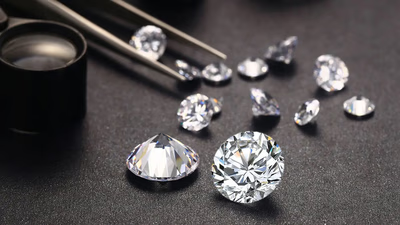
Diamonds hold significant cultural and economic value in the Middle East and Western Asia, symbolizing luxury, wealth, and social status. They are integral to jewelry, particularly in wedding traditions, where diamond engagement rings represent love and commitment. The region showcases a blend of traditional and contemporary diamond designs, with intricate craftsmanship and modern styles coexisting. Major trading hubs, especially Dubai, facilitate diamond commerce, attracting international businesses. The Dubai Diamond Exchange plays a pivotal role in this market, alongside other important cities like Antwerp and Israel. Diamonds are highly valued for their hardness, luster, and rarity, with various colors, including white and blue, being particularly sought after. The mining of diamonds occurs globally, with notable sources in Siberia, Australia, and Botswana. In the Middle East, diamond grading and certification are essential for ensuring quality and authenticity, with institutions like the Gemological Institute of America providing these services. Diamonds are increasingly viewed as investment assets, appreciated for their potential to retain and grow value over time, making them a popular choice among investors in the region.
-
What kind of Ruby is suitable for jewelry?
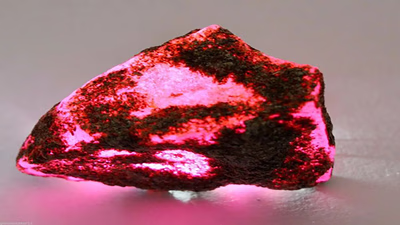
The quality of rubies for jewelry is primarily determined by color, clarity, origin, cut, and size. The most sought-after rubies exhibit a vibrant red hue, particularly the "pigeon"s blood" red, which is characterized by a pure red with a hint of blue. Clarity is also crucial; high-quality rubies have fewer visible inclusions and are often eye-clean. The origin of the ruby can impact its desirability, with Burmese and Mozambican rubies being particularly esteemed. Rubies are known for their hardness, second only to diamonds, and are believed to possess healing properties. The cut of a ruby affects its brilliance and light interaction, with popular shapes including oval, round, and cushion. Size is another factor, as larger, high-quality rubies are rarer and more valuable. Overall, when selecting a ruby for jewelry, one should consider these attributes to ensure the best choice."
-
Where can you find the best Turquoise gemstone in the world?
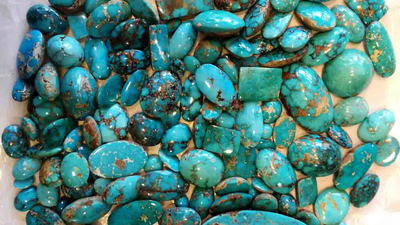
The Middle East, especially Iran, is a leading source of high-quality turquoise gemstones, with the Nishapur region noted for its intense blue color and unique matrix patterns. Afghanistan"s Badakhshan province also produces notable turquoise, sharing geological similarities with Iran. Other countries contributing to turquoise production include the United States, Mexico, China, and Egypt. The U.S. is a significant producer, with notable deposits in Arizona and New Mexico, while Mexico is recognized for its vibrant turquoise from the Cananea mine. China"s Hubei Province has gained prominence in recent years, particularly the Zhushan mine. The value of turquoise is influenced by size and smoothness, with larger, smoother stones fetching higher prices. The term "turquoise" originates from the French word for "Turkish stone," reflecting historical trade routes.
Variants like Ajami and Shajari turquoise from Neishabour are highly sought after globally. The Sinai Peninsula in Egypt also offers unique turquoise, valued by collectors. Overall, the Middle East remains a pivotal region for turquoise trade, with diverse sources and qualities enriching the global marketplace.
-
Asian Malachite or green marble

Malachite, a copper carbonate hydroxide mineral, is primarily formed through the weathering and oxidation of copper ore deposits. Notable Asian sources include Kazakhstan, Uzbekistan, Russia, China, and Mongolia, known for their unique malachite specimens characterized by vibrant green colors and distinctive banding patterns. Historically valued in various cultures, malachite is associated with protection, healing, and transformation. Its applications range from jewelry to decorative objects, with forms including cabochons and carvings. Malachite"s metaphysical properties are believed to promote emotional healing and balance. Due to its low hardness, it requires careful handling and cleaning with mild soap and water. Authenticity is crucial, as malachite is often imitated. Ethical sourcing is important when acquiring malachite to ensure responsible mining practices. Overall, malachite remains a popular choice for both contemporary and traditional jewelry designs."
-
Asian Apatite Gemstones Market
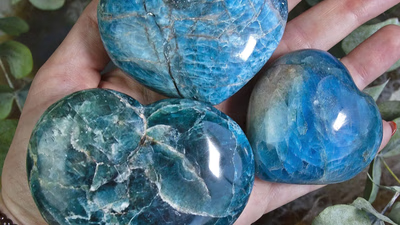
The Asian apatite gemstone market has seen a rise in popularity due to its vibrant colors and affordability, appealing to a growing middle class. Major sources include Myanmar, India, Sri Lanka, Thailand, and Pakistan, which produce various colors and qualities of apatite. Blue apatite is particularly sought after for its resemblance to more expensive stones like sapphire. The market is influenced by consumer trends favoring unique colors and cuts, with apatite gemstones being used in diverse jewelry forms. Treatments such as heat enhancement are common, necessitating transparency from sellers regarding gemstone modifications. The market operates through physical and online platforms, with trade shows facilitating connections between buyers and sellers. Ethical sourcing and sustainability are increasingly important, as consumers demand responsibly sourced gemstones, pushing market players to adopt fair trade practices and support mining communities.
-
Where can we buy an original agate gemstone?
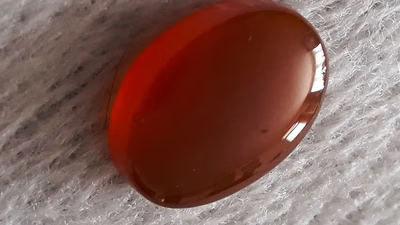
Reputable gemstone retailers, both online and physical, are essential for purchasing authentic agate gemstones. Researching retailers with solid reputations and positive reviews is crucial. Trade shows provide opportunities to connect with dealers and examine gemstones firsthand. Local gemstone stores can also offer guidance from knowledgeable staff. Agate, a semi-transparent stone composed mainly of silica, is popular in jewelry, especially in red, white, and yellow varieties. It is important to consider certified gemstones from reputable laboratories like GIA or AGL for assurance in quality and authenticity. Online marketplaces can be a good option, but caution is advised to ensure vendor verification and buyer protection. Platforms like Etsy and GemRockAuctions are recommended for reliable purchases.
-
What is the value of pearls from the Persian Gulf?
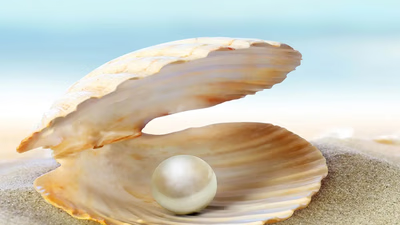
Persian Gulf pearls, particularly from Bahrain and the UAE, have a rich history and are highly valued due to their natural formation and cultural significance. Unlike cultured pearls, these organic gems are formed inside oysters in response to irritants, making them rare and desirable. Their unique luster, warm golden hues, and varying shapes contribute to their allure. Larger, round pearls are particularly sought after, while unique shapes like baroque also hold value. The cultural heritage of the region associates pearls with purity and prosperity, enhancing their desirability. The decline of the natural pearl industry due to overfishing and environmental factors has led to increased scarcity, further driving up their market value. Collectors and connoisseurs appreciate the historical context and craftsmanship of antique pearl jewelry, which can appreciate over time. Sustainable practices are being explored to revive the natural pearl industry, potentially impacting future availability. Overall, Persian Gulf pearls remain a symbol of luxury and status, maintaining strong demand in the global market.
-
What are West Asian (Middle Eastern) gemstones?
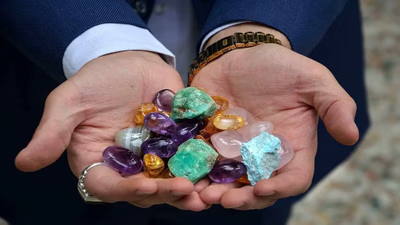
West Asia"s geological diversity has led to the formation of various gemstones, including turquoise, lapis lazuli, and peridot. The region has a rich history of mining and trading these stones, with ancient civilizations like the Persians and Egyptians utilizing advanced techniques for extraction. Turquoise, particularly from Iran"s Nishapur region, is highly valued, while Afghanistan is known for its lapis lazuli deposits. Peridot has been mined in Egypt for over 3,500 years, and onyx is popular for jewelry and carvings. Coral, though not a traditional gemstone, holds cultural significance in the region. The gemstone industry significantly impacts the economies of Middle Eastern countries, contributing to global trade. Various regions, including Isfahan and Khorasan, are known for their precious stones, which have historically been associated with supernatural beliefs. The Silk Road facilitated the exchange of gemstones, enhancing the diversity and market presence of these valuable minerals. Overall, West Asia remains a vital hub for gemstone trade, with a wide array of stones sought after for their beauty and cultural significance.
-
What is the basis of soecify the price of original Emerald of Afghanistan?

The value of Afghan emeralds is primarily determined by several key factors: color, clarity, cut, size, origin, and treatment. The most desirable emeralds exhibit a vivid green hue, ideally with slight bluish or yellowish undertones, and should be free from undesirable color zoning. Clarity is also crucial; emeralds with fewer visible inclusions are more valuable, with eye-clean stones commanding higher prices. Additionally, the cut of the emerald influences its brilliance and overall appearance, with well-cut stones maximizing color and minimizing the visibility of inclusions. Size matters, but quality takes precedence; a smaller, high-quality emerald can surpass a larger, inferior one in value. The origin of the emerald, particularly those from the Panjshir Valley in Afghanistan, adds to its desirability and potential premium. Treatments, such as oiling, can affect value, with untreated stones generally being more sought after. Expertise in gemstone evaluation is essential for accurate pricing, and consulting a qualified gemologist is recommended for potential buyers.
-
Asian Chrysocolla Gemstone Information
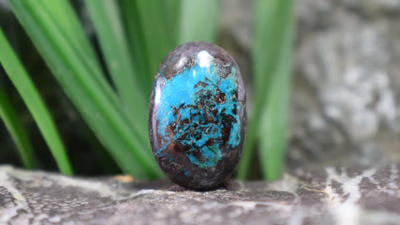
Chrysocolla is a hydrated copper silicate mineral, typically found in copper deposits, and is known for its vibrant blue, green, and turquoise colors. It is primarily sourced from several Asian countries, including China, Kazakhstan, Uzbekistan, and Russia. The gemstone is formed in the oxidation zones of copper deposits and often occurs alongside other minerals like malachite and azurite. Its porous nature can lead to variations in color and susceptibility to damage, requiring careful handling. Chrysocolla is prized for its aesthetic appeal, often used in jewelry such as pendants and earrings, but its low hardness makes it vulnerable to scratching. The gemstone is sometimes confused with turquoise due to its similar appearance. Beyond its physical properties, chrysocolla is associated with various metaphysical beliefs, including promoting calmness and creativity. Ethical sourcing is crucial when purchasing chrysocolla, as responsible mining practices help ensure sustainability in the gemstone industry.
Additionally, chrysocolla has historical significance in artistic expression, being used in sculptures and decorative objects. High-quality specimens are particularly noted from specific localities, such as the Ray Mine in Arizona and the Peruvian Andes, making them sought after in the market for their unique beauty and vibrant colors.
-
The method of recognizing real Lapis Lazuli from Afghanistan
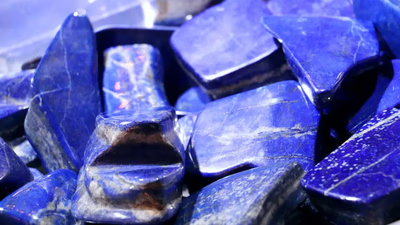
Genuine Lapis Lazuli from Afghanistan is characterized by its deep blue color, often referred to as "royal blue." Authentic stones may contain pyrite inclusions, which are golden flecks that help confirm their origin. The value of Lapis Lazuli increases with the presence of more pyrite and fewer white calcite streaks. This gemstone is primarily composed of lazurite, alongside calcite and sodalite. The Sar-e-Sang deposit in Afghanistan is the original source of Lapis Lazuli, known for its high-quality stones. The texture of authentic Lapis Lazuli is smooth and fine-grained, and it feels dense compared to imitations. Additionally, it may exhibit weak to moderate orange fluorescence under UV light, serving as another authenticity indicator. For those uncertain about their stone"s authenticity, consulting a gemologist or reputable jeweler is advisable, as they possess the expertise to accurately assess the gemstone"s characteristics.
-
West Asian (Middle eastern) natural morganite
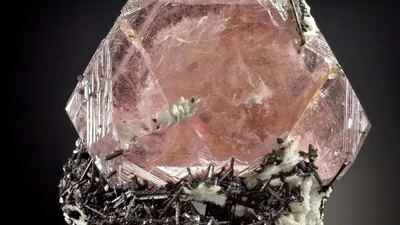
West Asian countries, particularly Afghanistan and Pakistan, are leading producers of high-quality morganite gemstones, derived from the beryl mineral. While Iran and Turkey also contribute, their output is lesser. Morganite is cherished for its pastel hues, ranging from light pink to peach, often with a hint of violet due to manganese traces. The region"s natural morganite showcases a spectrum of pink shades, with some exhibiting deeper colors. Its quality varies, with premium stones being clear, well-saturated, and consistent in color. Morganite is increasingly popular in jewelry, especially for engagement rings, due to its romantic appearance and affordability compared to other gemstones. It serves as an attractive alternative to pink sapphires and diamonds. The Middle Eastern market plays a significant role in the global demand for morganite, with trade occurring through local markets, jewelry stores, and online platforms.
Ethical sourcing and responsible mining practices are gaining importance, ensuring that morganite is obtained sustainably while supporting local communities. Proper care is essential for maintaining morganite"s beauty, including protection from harsh chemicals and extreme conditions.
-
Iimportance of Jade in jewelry market
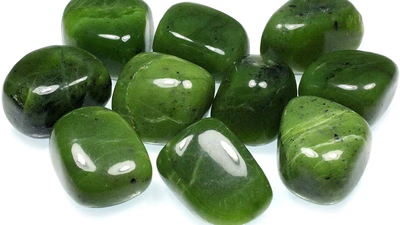
Jade holds significant cultural importance across various civilizations, particularly in Asian cultures, symbolizing purity, wisdom, and prosperity. Its rarity and desirability in the jewelry market stem from the limited availability of high-quality jade, especially in larger sizes and vibrant colors like imperial green. This gemstone"s durability, ranking 6 to 7 on the Mohs scale, makes it suitable for everyday jewelry, including rings and pendants. Jade"s versatility in color and design allows for a wide range of creative expressions among jewelry designers. Additionally, jade is believed to possess healing properties and is associated with luck and protection, further enhancing its appeal. The interplay of light and color within jade creates a captivating visual effect, making it a sought-after choice for collectors and enthusiasts. As a result, fine-quality jade can appreciate in value over time, making it an investment-grade gemstone. Its cultural significance, unique appearance, and demand contribute to jade"s enduring importance in the jewelry market."


























































